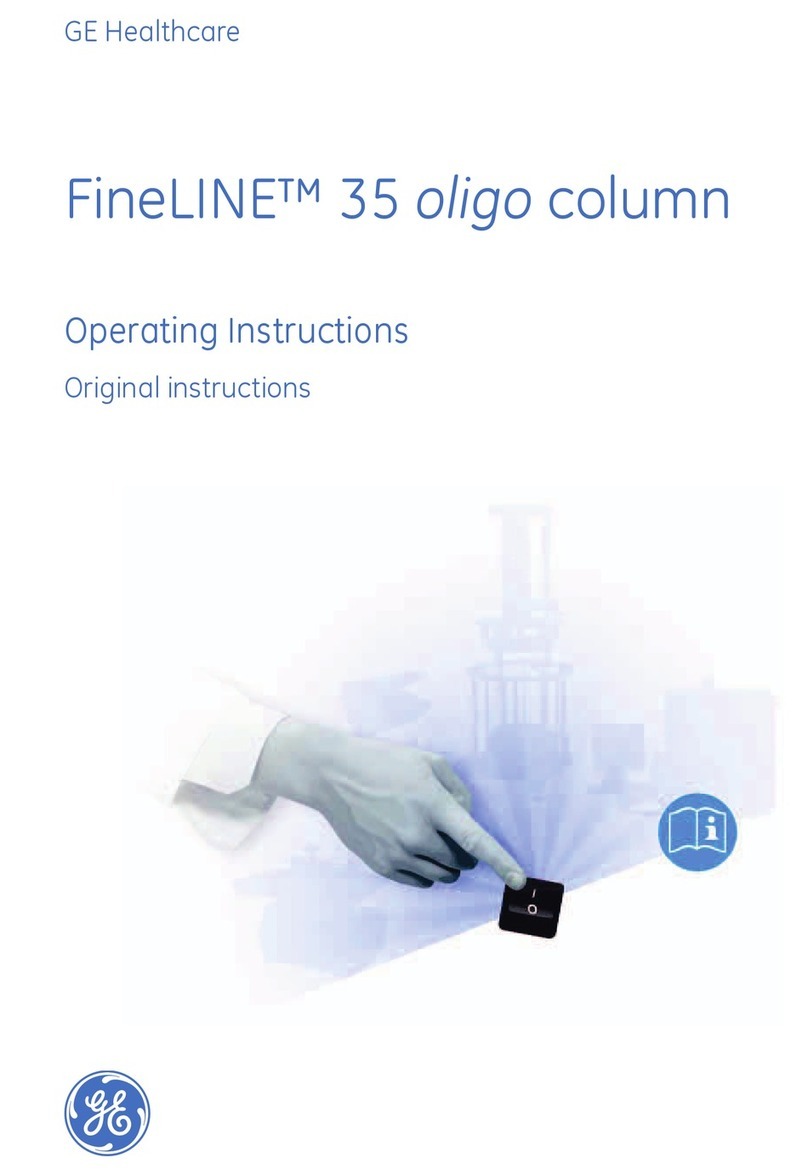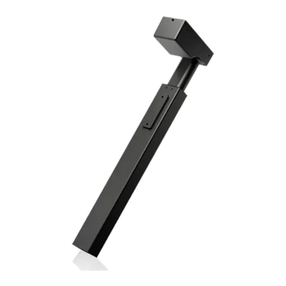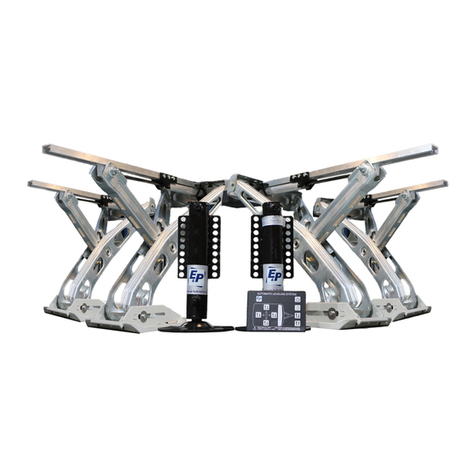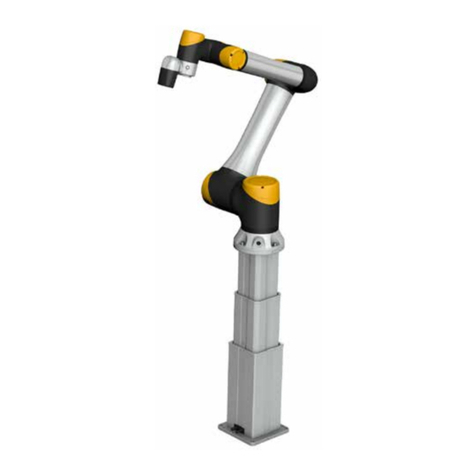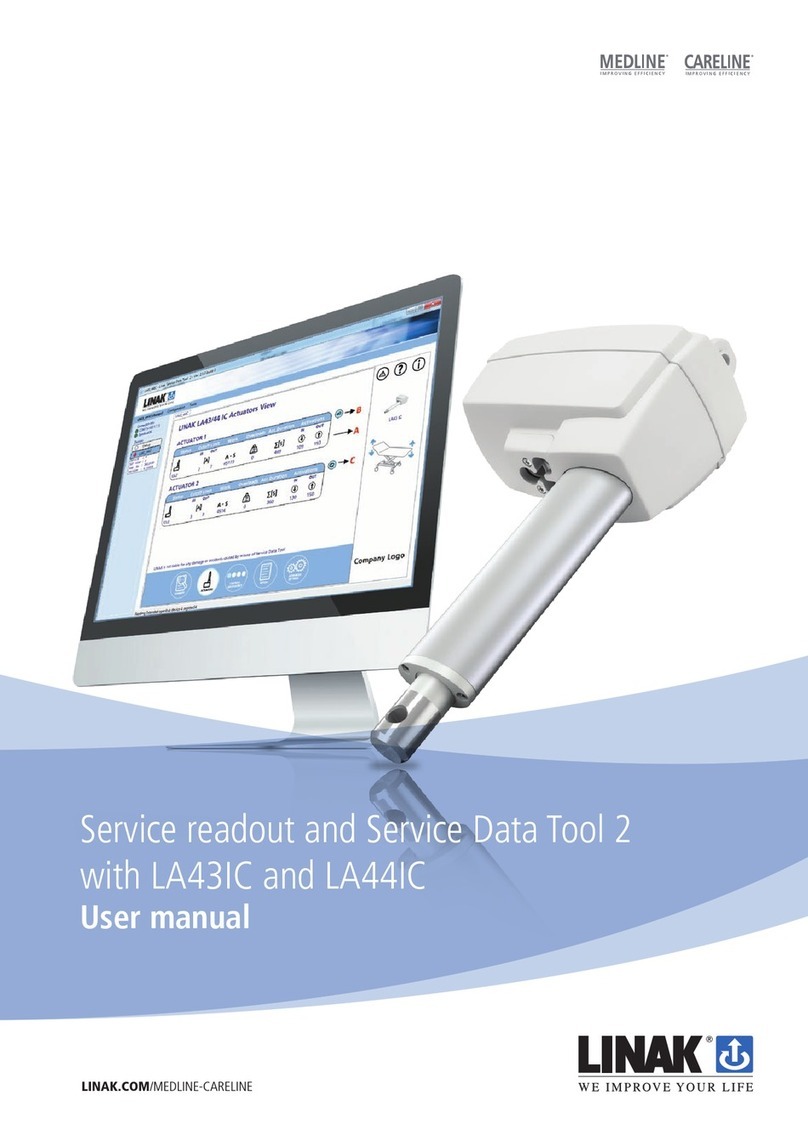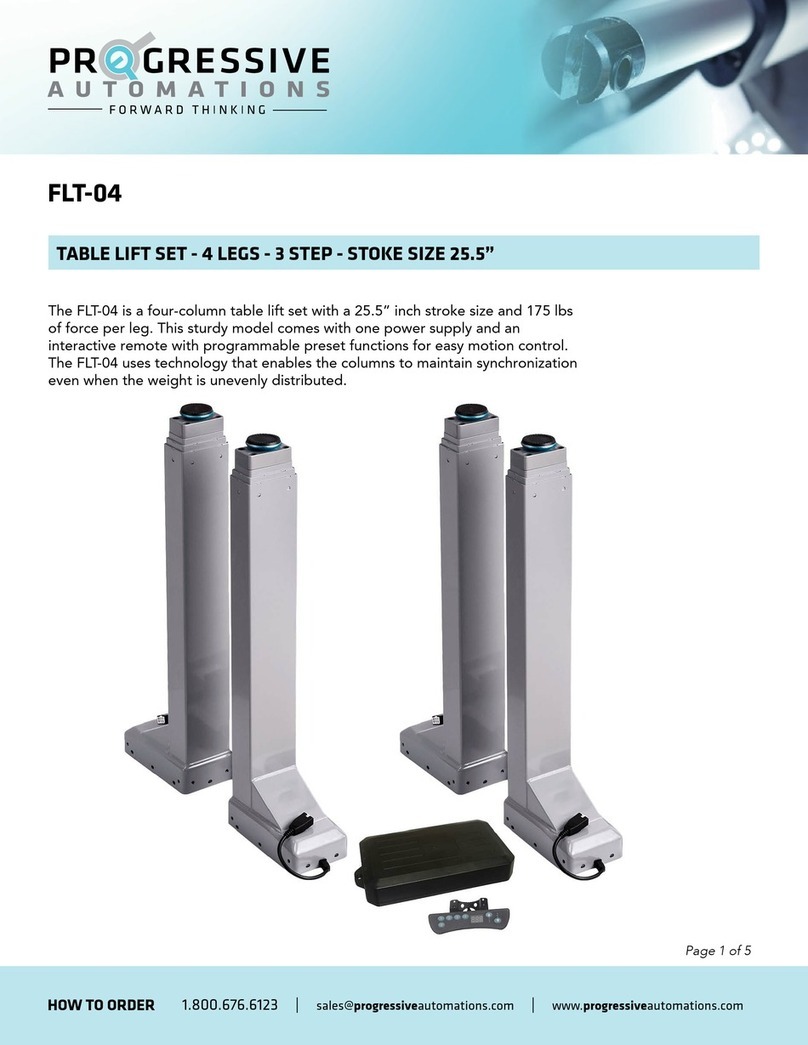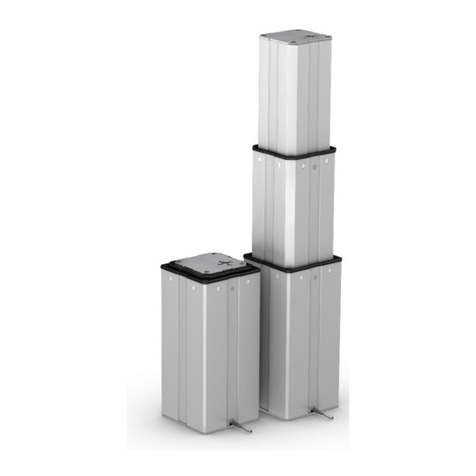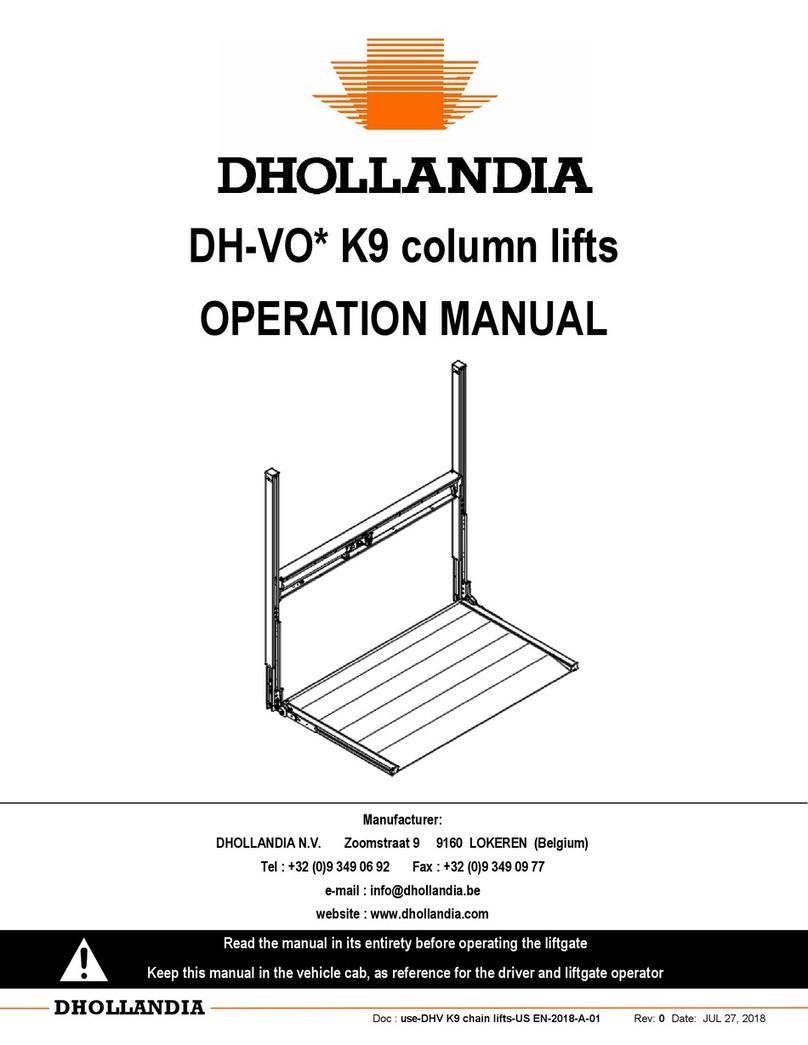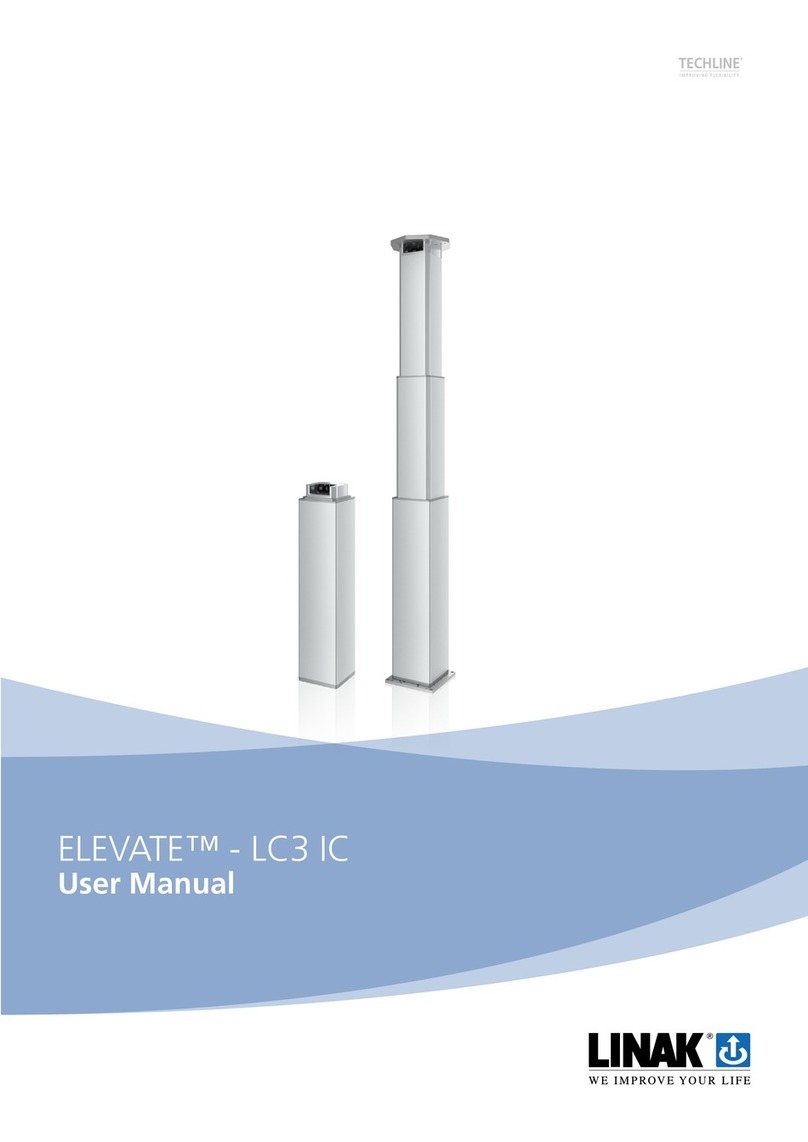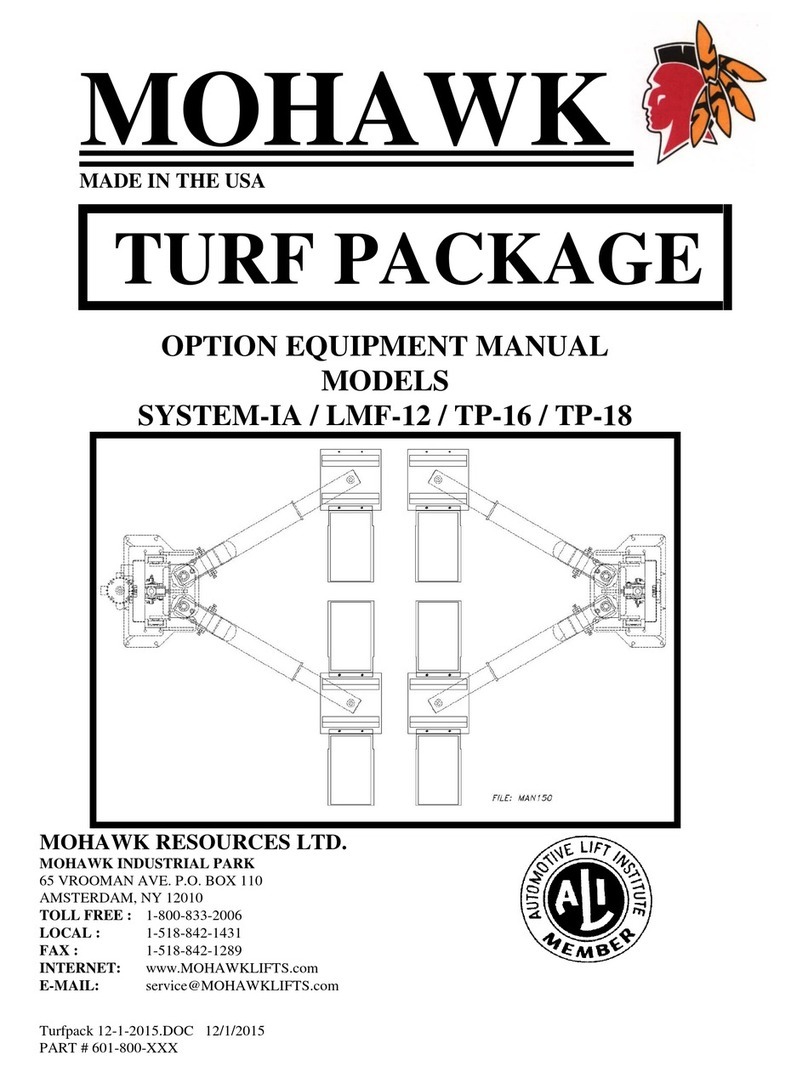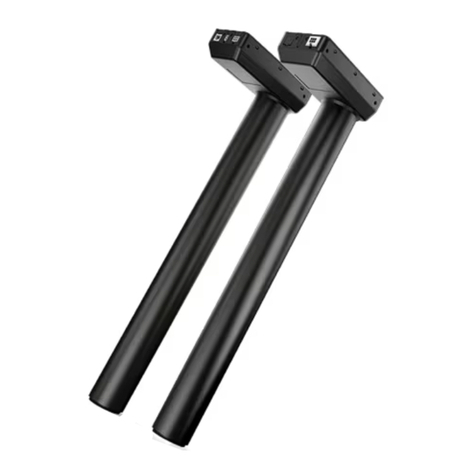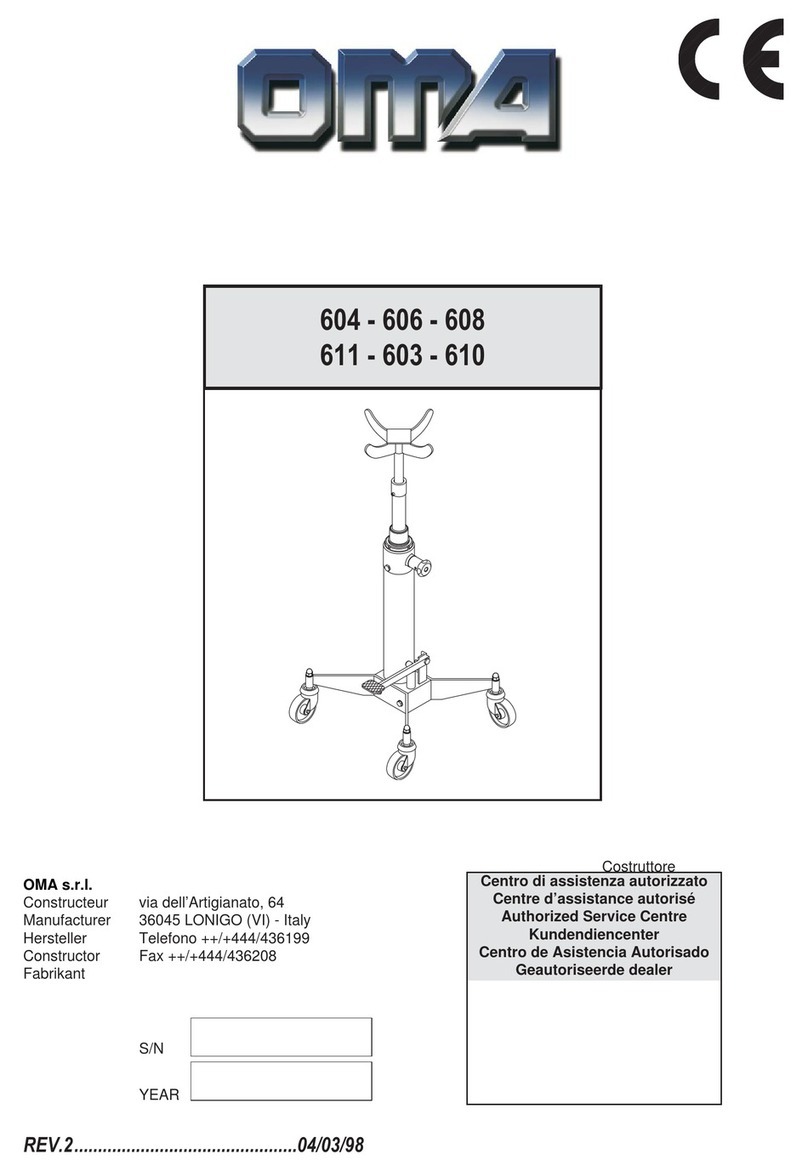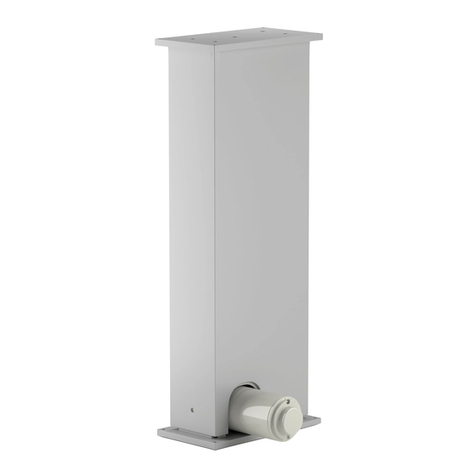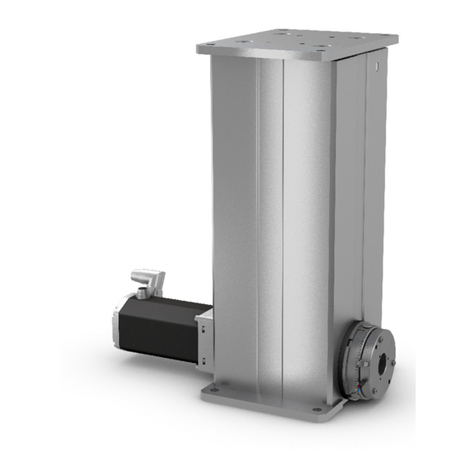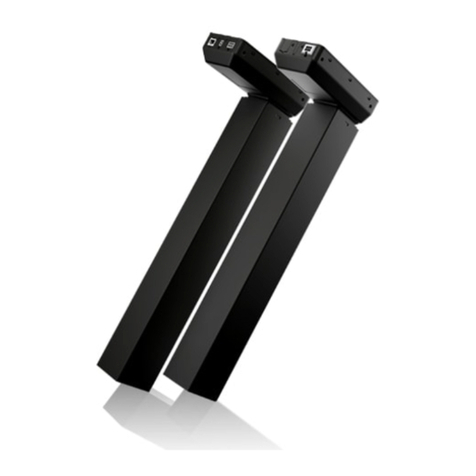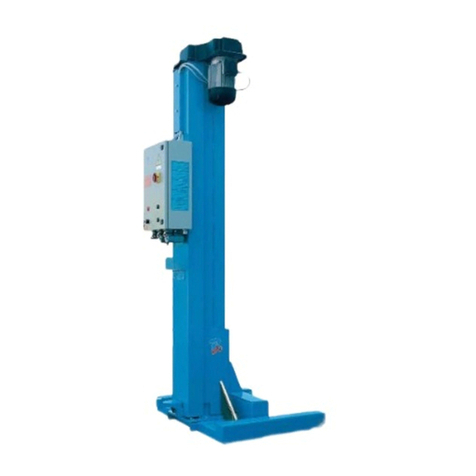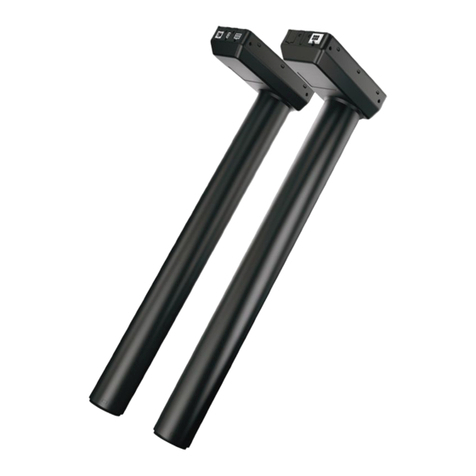
STOCCAGGIO
Gli imballi devono sempre essere conservati in luoghi coperti e
protetti a temperature comprese fra -10°C e +40°C. e non devono
essere esposti ai raggi diretti del sole.
IMPILAMENTO DEI PACCHI
Il tipo di imballo previsto prevede la possibilità di impilare in ma-
gazzino fino ad 8 gabbie una sull’altra, purchè vengano corretta-
mente disposte ed assicurate contro la caduta.
Nei cassoni dei camion o nei containers si possono impilare fino a
3 gabbie, purchè vengano reggiate bene ed assicurate contro
la caduta.
APERTURA DEGLI IMBALLI
All’arrivo verificare che la macchina non abbia subito danni durante
il trasporto e che ci siano tutti i pezzi indicati nella lista di spedizio-
ne.
Le gabbie devono essere aperte adottando tutte le precauzioni per
evitare danni alle e ai pezzi della macchina (evitare cadute di pezzi
dalla gabbia durante l’apertura).
ELIMINAZIONE DELL’IMBALLO
Il legno della gabbia può essere riutilizzato o riciclato.
INTRODUZIONE
IATTENZIONE
Questo manuale è stato scritto per il personale di officina ad-
detto all’uso del sollevatore (operatore) e per il tecnico addet-
to alla manutenzione ordinaria (manutentore) pertanto, prima
di effettuare qualsiasi operazione sul sollevatore e/o sul suo
imballaggio, occorre leggere attentamente tutto il manuale,
poichè esso contiene informazioni importanti per:
·LA SICUREZZA DELLE PERSONE addette all’uso ed alla
manutenzione ordinaria,
·LA SICUREZZA DEL SOLLEVATORE,
·LA SICUREZZA DEI VEICOLI sollevati.
CONSERVAZIONE DEL MANUALE
Il manuale è parte integrante del sollevatore e deve sempre ac-
compagnarlo, anche in caso di vendita.
Esso deve sempre essere conservato in vicinanza del sollevatore,
in luogo facilmente accessibile.
L’operatore ed il manutentore devono poterlo reperire e consultare
rapidamente in qualsiasi momento.
SI RACCOMANDA, IN PARTICOLARE, UNA LETTURA ATTENTA
E RIPETUTA DEL CAPITOLO 3, CHE CONTIENE IMPORTANTI
INFORMAZIONI E AVVISI RELATIVI ALLA SICUREZZA.
Il sollevatore è stato progettato e costruito rispettando quanto se-
gue:
LEGGI:
Direttive europee: 98/37/CE-2004/108/CE-2006/95/CE
NORME TECNICHE:
Norme europee: EN 1493/ EN 292-1/ EN 292-2
IMPIANTO ELETTRICO:
UNI EN 60204, CEI 64/8
STORAGE
Packed machinery must always be kept in a covered, protected
place, at a temperature between -10 °C e + 40°C, and must not be
exposed to direct sunlight.
CRATE STACKING.
The type of packing allows the possibility of stacking up to 8 cra-
tes.
Up to 3 crates may be stacked one upon the other on lorries or in
containers if properly positioned and provided they are restrai-
ned to prevent falling.
OPENING THE CRATES
When the crates arrive, check that the machine has not been da-
maged during transport and that all parts listed are present.
The crates must be opened using all possible precautionary mea-
sures to avoid damaging the machine or its parts. Make sure that
parts do not fall from the crate during opening.
DISPOSAL OF CRATES
The wood of the crates may be re-used or recycled.
INTRODUCTION
IWARNING
This manual has been prepared for workshop personnel ex-
pert in the use of the lift (operator) and technicians responsib-
le for routine maintenance (maintenance fitter); read the ma-
nual before carrying out any operation with the lift and/or the
packing. This manual contains important information regar-
ding:
·THE PERSONAL SAFETY of operators and maintenance
workers,
·LIFT SAFETY,
·THE SAFETY OF LIFTED VEHICLES
CONSERVING THE MANUAL
The manual is an integral part of the lift , which it should al-
ways accompany , even if the unit is sold.
The manual must be kept in the vicinity of the lift, in an easily ac-
cessible place.
The operator and maintenance staff must be able to locate and
consult the manual quickly and at any time.
ATTENTIVE AND REPEATED READING OF CHAPTER 3 ,
WHICH CONTAINS IMPORTANT INFORMATION AND SAFETY
WARNINGS, IS PARTICULARLY RECOMMENDED.
Lift rack has been designed and built in compliance with the fol-
lowing:
LAWS:
European directives: 98/37/CE-2004/108/CE-2006/95/CE
TECHNICAL STANDARDS:
European standards: EN 1493/ EN 292-1/ EN 292-2
ELECTRICAL SYSTEM:
UNI EN 60204, CEI 64/8
4
